Which Vintage Watch Brands Are Worth Collecting?
Which Vintage Watch Brands Are Worth Collecting?
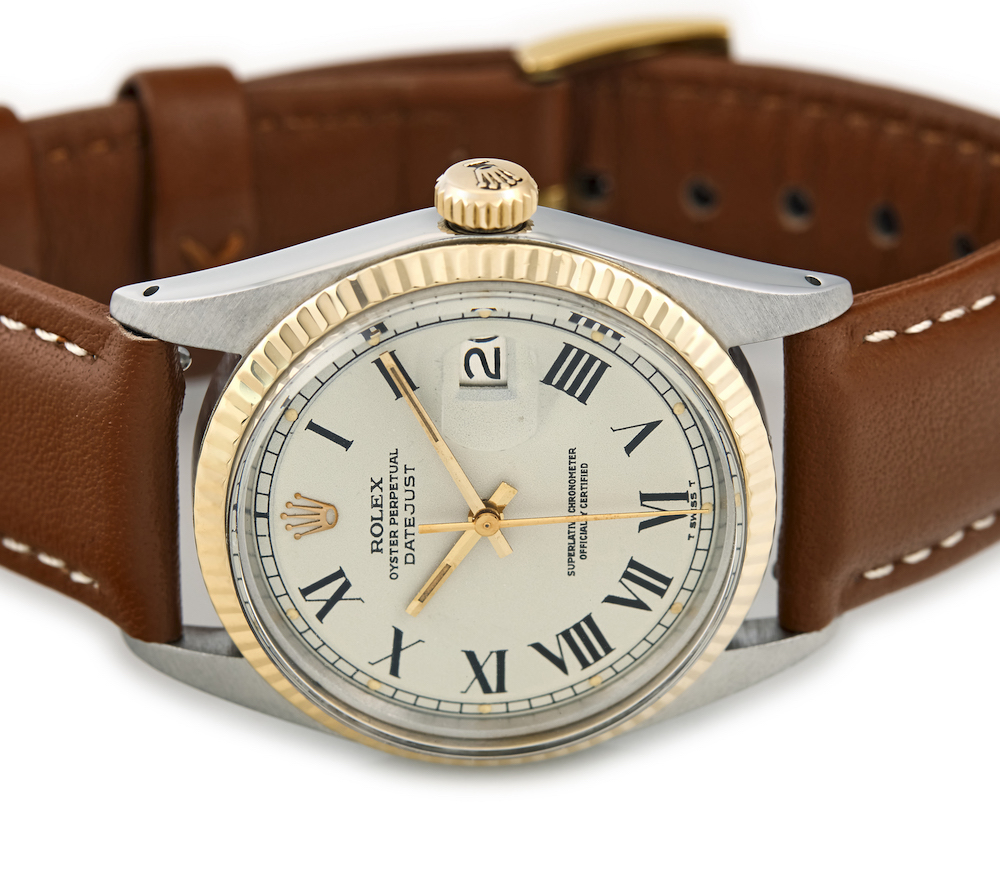
If you’re new to the exciting world of vintage watch brands and you’re not sure where to start, this article will help you to get a grasp on some of the brands collectors love to collect. The brand of a watch certainly isn’t everything, but it’s a good place to start your vintage watch research. Just keep in mind that brand and collectability are not mutually exclusive.
Whether you’re just starting your collection or looking to add to it, here’s our guide to the most collectable vintage brands and why they have become so very desirable.

What Makes A Watch Collectible?
A highly collectable vintage watch is a seemingly rare combination of factors. Many aspects should be considered when buying any vintage watch: originality, authenticity, condition, provenance, and documentation, to name but a few.
Add into the mix the $64,000 question; “What makes a watch collectable?” and even more factors come to light. Watch collectors compare notes and collections to identify models of potential value. As this information spreads, it leads to hype around certain models, often for fairly abstract reasons such as an evenly faded bezel or some discontinued snowflake hands.
These following elements will affect if a watch becomes a popular collectable:
Heritage
Watch brands with the strongest heritage and lineage of popular models make the most collectable watches. The most obvious examples include Rolex Oyster and Oyster Perpetual watches, which have remained in continuous production for almost 100 years. This makes the Rolex Oyster Perpetual the most collectable and collected watch.
The Rolex Datejust is another example. The first waterproof automatic wristwatch to include a date function was launched in 1948 and has remained in production ever since. Likewise, the Rolex Day-Date, GMT, Submariner and Daytona fall into the same group and are highly collectable.
History
A watch which has witnessed a moment of history or a record-breaking attempt only adds to the cachet. Such examples include the Rolex Oyster Perpetual, the Rolex Submariner and the Rolex Explorer. The Explorer gained fame when Rolex provided a prototype for the team to wear on the successful 1953 Everest expedition and it’s benefited from that legacy ever since.
Huge collector kudos went to Omega when the Omega Speedmaster model 105.012 went to the moon with the astronauts of Apollo 11 in July 1969. From a collector’s perspective, one of the interesting features of the 105.012 was that it was the first model with the word “Professional” on the dial, and because it went to the moon, it’s incredibly collectable.

Brands of Vintage Watch Worth Collecting
There are watch brands which hold more value due to their reputation and brand recognition. These present the greatest opportunities to find a rare gem that deserves a place on your wrist.
Here are the top 5 watch brands you should seriously consider when buying vintage watches:
Rolex
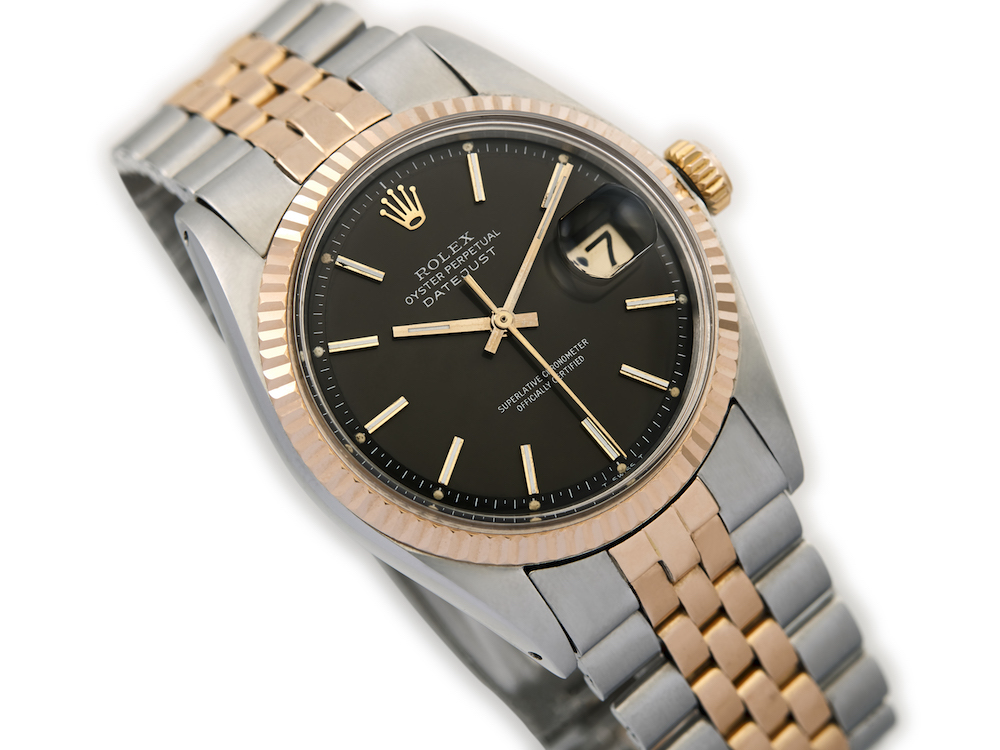
Rolex has been the most well-known and desired watch brand for decades. The brand name alone is globally synonymous with aspirational luxury. Rolex scores highly in terms of reliability, heritage and brand recognition. So much so that Rolex is the only watchmaker in the 2023 Global RepTrack 100, holding the number six position for being the world’s most reputable brand in any category.
All this is excellent news for Rolex’s investment potential. Year after year, values seem to defy gravity. Why? Here’s how Rolex has climbed to this well-deserved top spot:
Functionality and design:
The brand was built on innovation and holds over 500 patents for its watch designs. It has an impressive list of inventions that have been admired and copied the world over, such as the first waterproof watch in 1927.
Apart from its 1950s dress watches, Rolex is best known for its sports and sports dress watches. It all began with the Oyster Perpetual. Any version of the Oyster Perpetual is a good collection starting point since these waterproof automatics are robust, reliable and highly regarded.
Rolex is perhaps most famous for its purpose-built designs, such as the Submariner, GMT, Daytona and Milgauss, which are made for divers, pilots, motor racing, engineers and scientists. All of these are excellent models to collect.
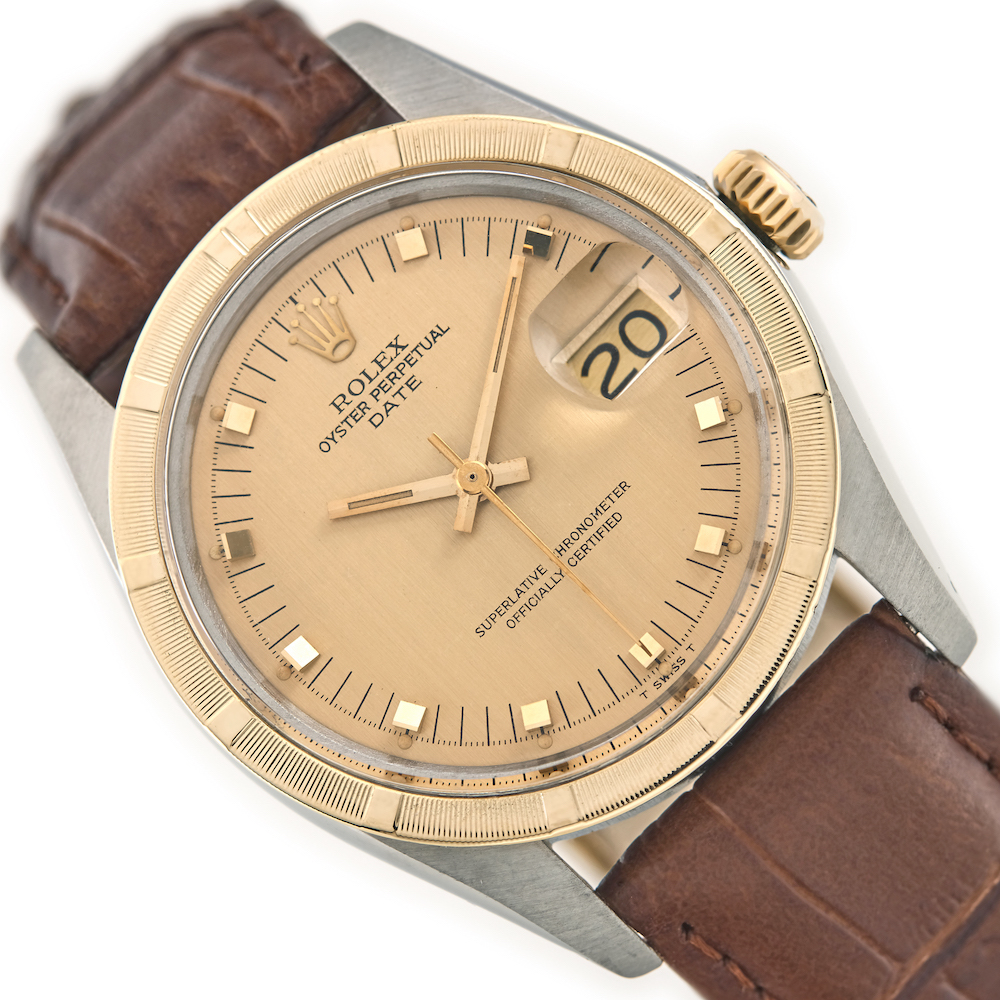
Celebrity endorsement and marketing:
Through associations with sport, celebrity and the rich and famous, wearing a Rolex gives you an instant feeling of exclusivity. Rolex has a long history of sports celebrity endorsements — the first woman to swim the English Channel was given a Rolex to wear during the swim. Retired tennis star Roger Federer is Rolex’s current brand ambassador and many other famous faces have endorsed Rolex over the decades.
Durability and quality:
Rolex’s production standards are second to none – they even run an in-house gold foundry to create their own harder-wearing 18ct gold. They also use Oystersteel, a high-performance stainless steel of grade 904L, exclusively produced for Rolex since 1985.
On top of their extremely high build quality, they’re designed with features that make them less likely to fail. Rolex produces more chronometer-grade watches than any other brand. This means its watches are extremely reliable and accurately show time in almost all temperatures and weather conditions.

Patek Philippe
The famous Patek Philippe slogan “You never really own a Patek Philippe. You simply look after it for the next generation” gets the message across. The brand is highly aspirational and owning a Patek watch isn’t merely a device for telling the time. It’s an asset for life and an heirloom that transfers value and prestige across generations.
We associate Patek Philippe with only the best, particularly understated elegance, craftsmanship, exquisite design, perfection and total confidence and commitment in everything it does. Understandably, the brand is especially popular amongst high-end collectors. Their rarity, quality, and craftsmanship elevate the brand to a position above all others. Here are some of the reasons vintage Patek Philippe’s are collectors gems:
Scarcity:
Fewer than one million Patek Philippe watches have been made since 1839. That’s fewer than Rolex produces in a year. Patek production is so detailed that it takes nine months to make its most basic watches, and more than two years to produce some of the more complicated timepieces.
The company limits itself to producing less than 50,000 watches per year, even though it’s estimated the company could sell ten times this figure. Meanwhile, demand remains higher than ever.
 Design:
Design:
The true beauty of Patek watches lies in their design and manufacture. This includes, of course, their movements but also their case, dials, and bracelets. Every individual part is painstakingly crafted and hand-finished. Close examination under high magnification shows that every single part and minute detail of a Patek Philippe timepiece is perfect. There are craftsmen at Patek who spend their entire day polishing to perfection tiny parts the eye will never see.
Traditionally Patek is best known for its conservative, classically sized, mid-century gold dress watches. It defined the form of the modern wristwatch when it launched its first Calatrava model in 1932 with its 31 mm case. It was always much more technically challenging to produce a smaller, accurate and reliable wristwatch, so these traditionally sold at a premium. Collectors are well aware of this, while the general market is not.
Resale value:
Patek Philippe’s resale value trumps that of all other makers, whether vintage or modern. Watches completed for Patek’s 175th-anniversary collection are already trading on the secondary market for extraordinary prices. Models, such as an original Nautilus from the 1970s, originally retailed for less than £2,500, now trade for more than £40,000.
For all of these reasons stated, and because of their incredible history and inventiveness, Patek is rightly regarded as the very top of the tree in the best of Swiss watchmaking, making them a smart addition to any collection.

Omega
For almost two centuries, Omega has been a name synonymous with success, stature, Swiss-made quality and innovation. Omega watches are sought after by watch enthusiasts and avid collectors alike. From an investment point of view, Omega is considered a safe buy.
Also, as Omega’s latest master chronometer models continue to break new ground for accuracy, their style, value, and accessibility mean Omega is becoming increasingly more popular. There are some excellent reasons why they make the collectors cut:
One of the Oldest Swiss Brands:
It can easily be argued that as both a company and a brand, Omega has been stronger for longer than any other. With a 60-year head start on Rolex, the brand had the advantage and carried more prestige than Rolex until around the end of the 1960s.
Founded by Louis Brandt, it began as an assembly “Comptoir” in La Chaux de Fonds, Switzerland in 1848. Brandt’s passion for precision drove him to embark on the creation of the most precise timepieces possible. Within a short span of time, his commitment to excellence in watchmaking earned him a solid reputation for producing top-quality watches, first in Switzerland and subsequently throughout Europe.
Scarcity and Value:
As with all vintage watches, scarcity can drive up value, and this is particularly true of certain vintage Omega models. Examples include the Cal.33.3 Chronograph and the Cal.30T2 Chronometer. Also, the rarer examples are from the Seamaster and Constellation ranges, particularly in pink gold. If they have original gold bracelets, boxes and paperwork, this can drive values sky-high. The Omega Cal. 33.3, a renowned chronograph movement, commands a significant premium in today’s market, often reaching five-figure prices, well surpassing the value of a typical vintage Omega timepiece.
Within each model range, Omega produced a dizzying number of dial and case combinations. Because of this, it’s most unusual to come across the same combination more than once. This makes collecting Omega watches a great deal of fun because there is so much to choose from.
 Movement Design:
Movement Design:
Omega has built one of the best track records for movement design, accuracy and reliability. It became one of the most successful of the early ‘Observatory trials’ carried out in Geneva in the late 19th and early 20th centuries. The Cal.30 was first released in 1939 and was so successful it remained in production, regularly certified as Chronometer grade, until 1963. It became famous for winning the first prize ‘for precision’ i.e. accuracy and reliability, at the Kew Observatory trials in 1946.
Omega’s automatic movements made during the 1960s are considered some of the finest of the period. The 1960s models are excellent value and so are often the watches we recommend for someone buying their first vintage watch. Another reason why they are widely collected on a global scale is partly to do with their relative affordability. Omega continues to offer market-leading and highly collectable watches to this day.
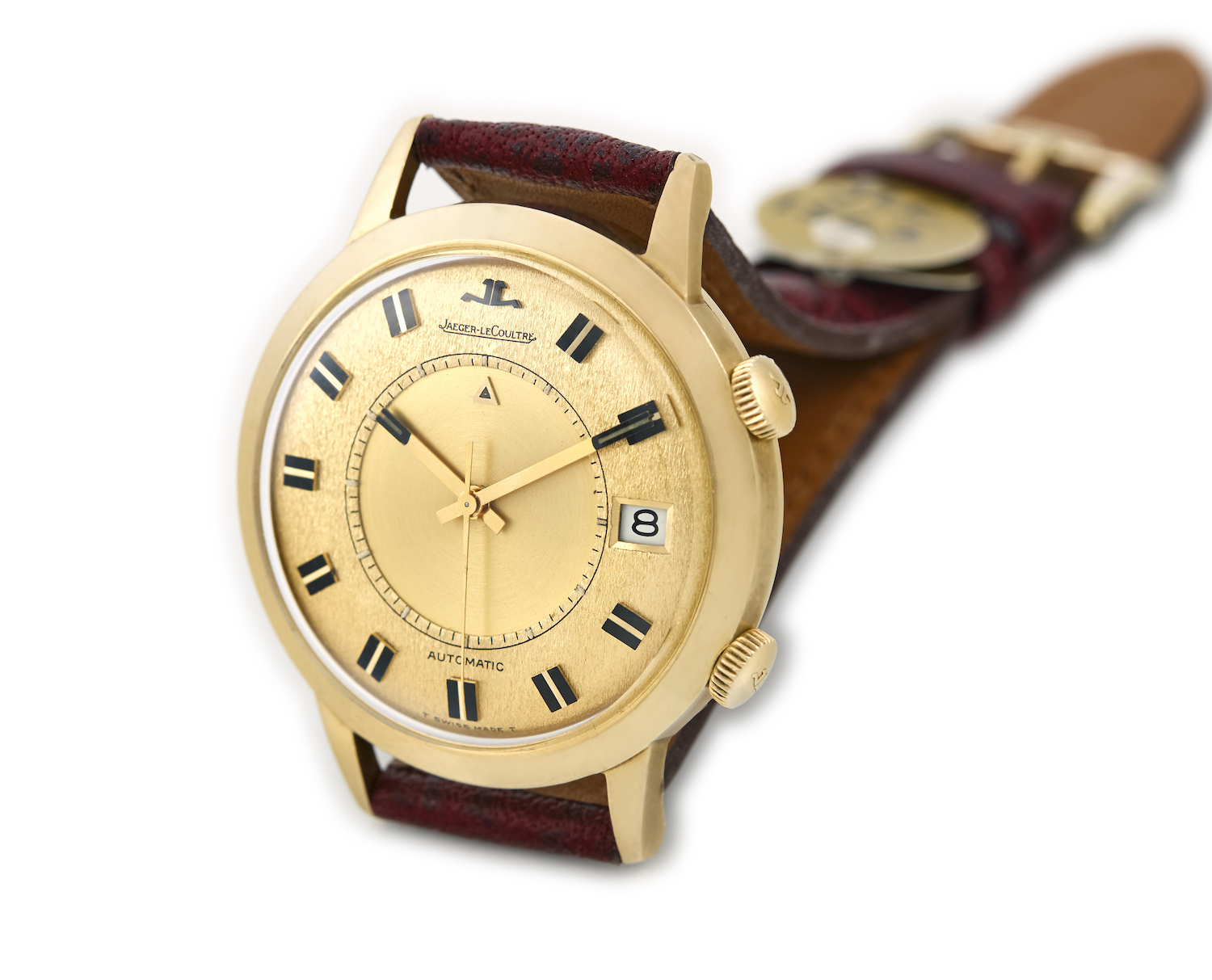
Jaeger-LeCoultre
Known as ‘the watchmaker’s watch’, Jaeger-LeCoultre is the epitome of sophisticated design and elegance. Jaeger-Le Coultre is noted for exceptional craftsmanship, innovative designs, and a rich heritage. Based in Le Sentier, Switzerland, Jaeger-LeCoultre was founded in 1833, the brand has consistently produced some of the world’s finest timepieces.
Jaeger-LeCoultre is well respected for its mastery of watchmaking complications, including chronographs, perpetual calendars, tourbillons, minute repeaters, and dual-time watches. The company is also recognised for manufacturing almost all the components of its watches in-house, including movements, cases, and dials. It’s a star name in the world of vintage watches for these reasons:
Innovation and Design:
Since its founding, Jaeger-LeCoultre has had a highly inventive history, developing over 1,249 mechanical calibres, registering over 400 Patents and playing a leading role in the development of
the industry as a whole. Whether it’s the world’s first keyless watch, its Calibre 101, the Futurematic, the Memovox, or the iconic Reverso, it would be difficult to imagine a historical account of watchmaking without the mention of Jaeger-LeCoultre.
The Reverso remains one of JLC’s most collectable watches. Introduced in 1931 as a sports watch for polo players. Over the years, the Reverso collection has expanded to include various models, sizes, and complications, while maintaining its elegant Art Deco design. The design has changed little since the 1930s, except for upgrades to the movement and components. It’s the sign of a truly iconic watch.

Manufacturing:
Jaeger-LeCoultre continues to produce all their movements, dials, cases and hands in-house. In addition to producing movements for its own watches, it has also produced movements for several famous watch houses such as Vacheron Constantin, Audemars Piguet, and IWC.
The company has always been a true ‘manufacturer’ of the finest quality watch movements. This is unusual because high-end brands such as Rolex, Patek Phillippe and Vacheron Constantin often buy in movements for their particular needs. Each Jaeger-LeCoultre watch is subjected to 1000 hours of testing and has arguably the strictest testing in the business. These exacting standards give testament to the quality and class of Jaeger-LeCoultre.
Uniqueness:
Many things set this brand apart, from its long Swiss heritage to its innovations and exceptional movement designs. More than anything, though, Jaeger-LeCoultre’s watches look unlike any other brand, and the closer you look, the more you will find unique qualities.
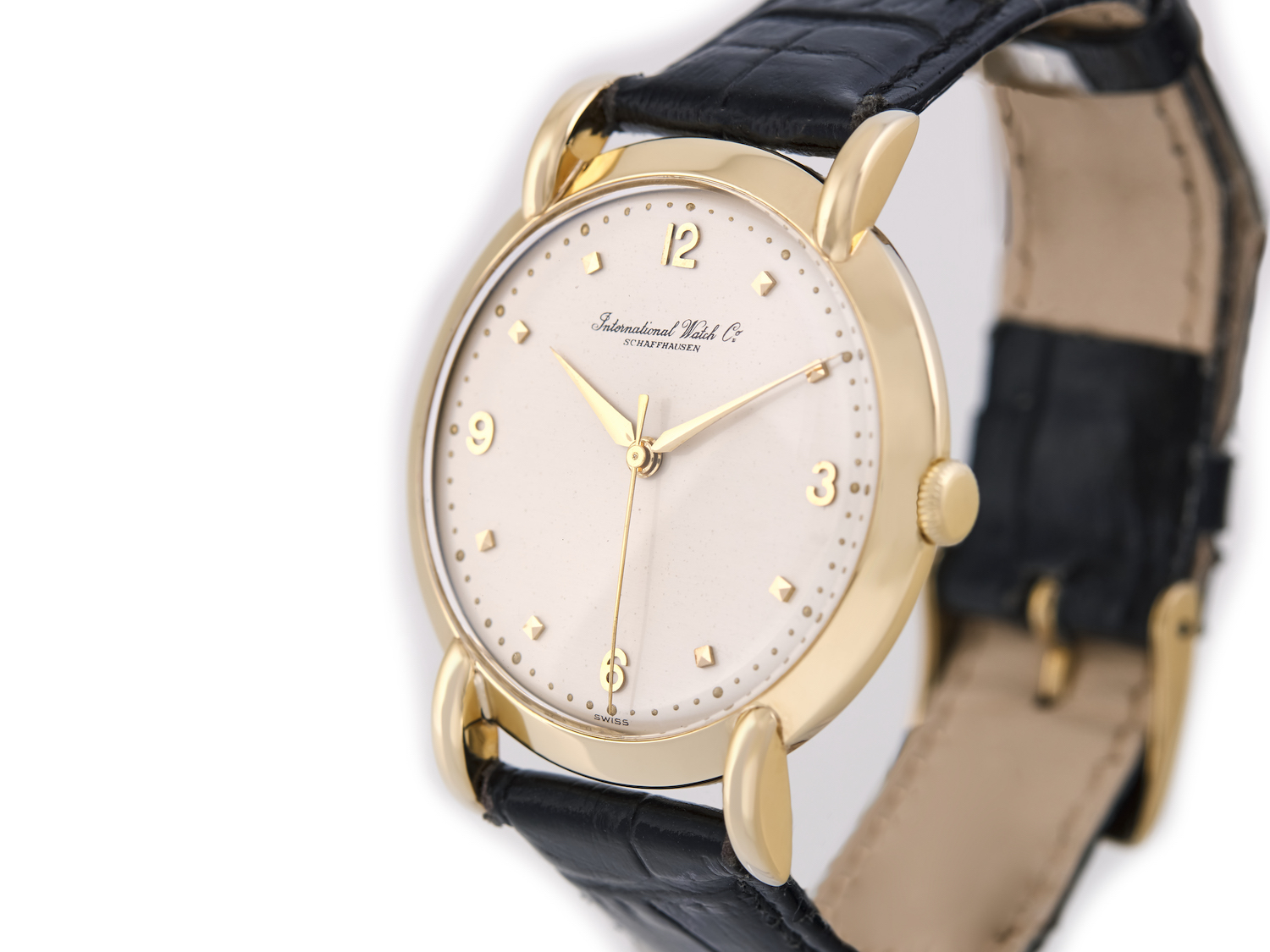
IWC
It is often said that owning a vintage IWC is something everyone with a serious interest in vintage watches should aspire to. A strong statement, but a little time spent researching the International Watch Company, will likely lead you to the same conclusion. Here’s why they are so aspirational:
Manufacturing Brilliance:
During the 1950s and ’60s, the golden era for Swiss Watches in general, IWC determined they would manufacture some of the best watches ever made. Quite simply, this is what the brand achieved.
Founded by an American watchmaker, Florentine Ariosto Jones in Schaffhausen, Switzerland in 1868, the craftsmanship, technical excellence and sheer beauty of their exquisite movements and cases, manufactured during the glorious era of watch-making, has never been beaten – equalled, perhaps, very occasionally, but never beaten!
IWC’s products span a range wider than that of many other watch companies, and the quality of their watches places them among the major Swiss watch manufacturers. But while it has a wide range of models, scarcity plays a role in the collectability of IWCs, as do these factors:
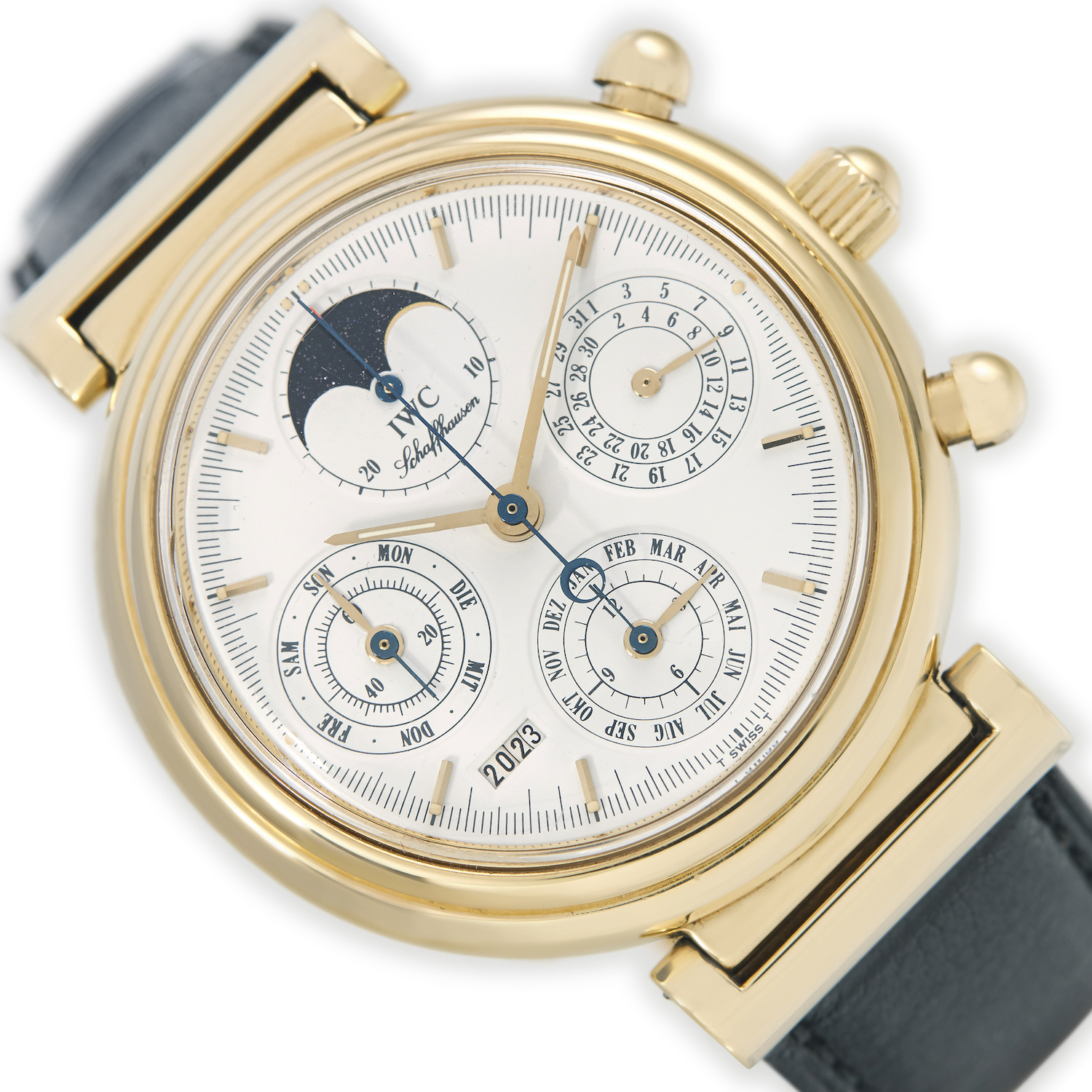
Movement Design:
An example of a truly iconic movement is the IWC Calibre 89. Designed and built to military specifications, the Cal.89 has certainly stood the test of time, remaining in production for civilian and military use for over 40 years.
Also, IWC Calibre 852 series automatic movements are considered one of the best automatic movements of its time. IWC could also be the ‘intelligent watch company’ for those who really know about watches.
Innovation:
IWC has an impressive history of innovation and design that’s second to none. For example, the Grand Complication wristwatch was, as you’d expect from the name, the most complicated timepiece of its kind — containing 659 parts. Meanwhile, the Aquatimer was the first to be water resistant to 2,000 metres and the Da Vinci can be accurate for 500 years.
Famous collections in the IWC portfolio include the Portugieser, which pays tribute to IWC’s maritime heritage, the elegant Portofino collection, and the robust and sporty Ingenieur collection, with both classic and contemporary models, often incorporating chronographs and other complications.
If that isn’t enough kudos, for 20 years, IWC worked with an engineer called Ferdinand Porsche, whose other design work aside from watches included the Volkswagen Beetle. He also founded a rather famous car manufacturer that bears his name — so you know you are dealing with a company that has an eye for design when you see its prestigious curriculum vitae.
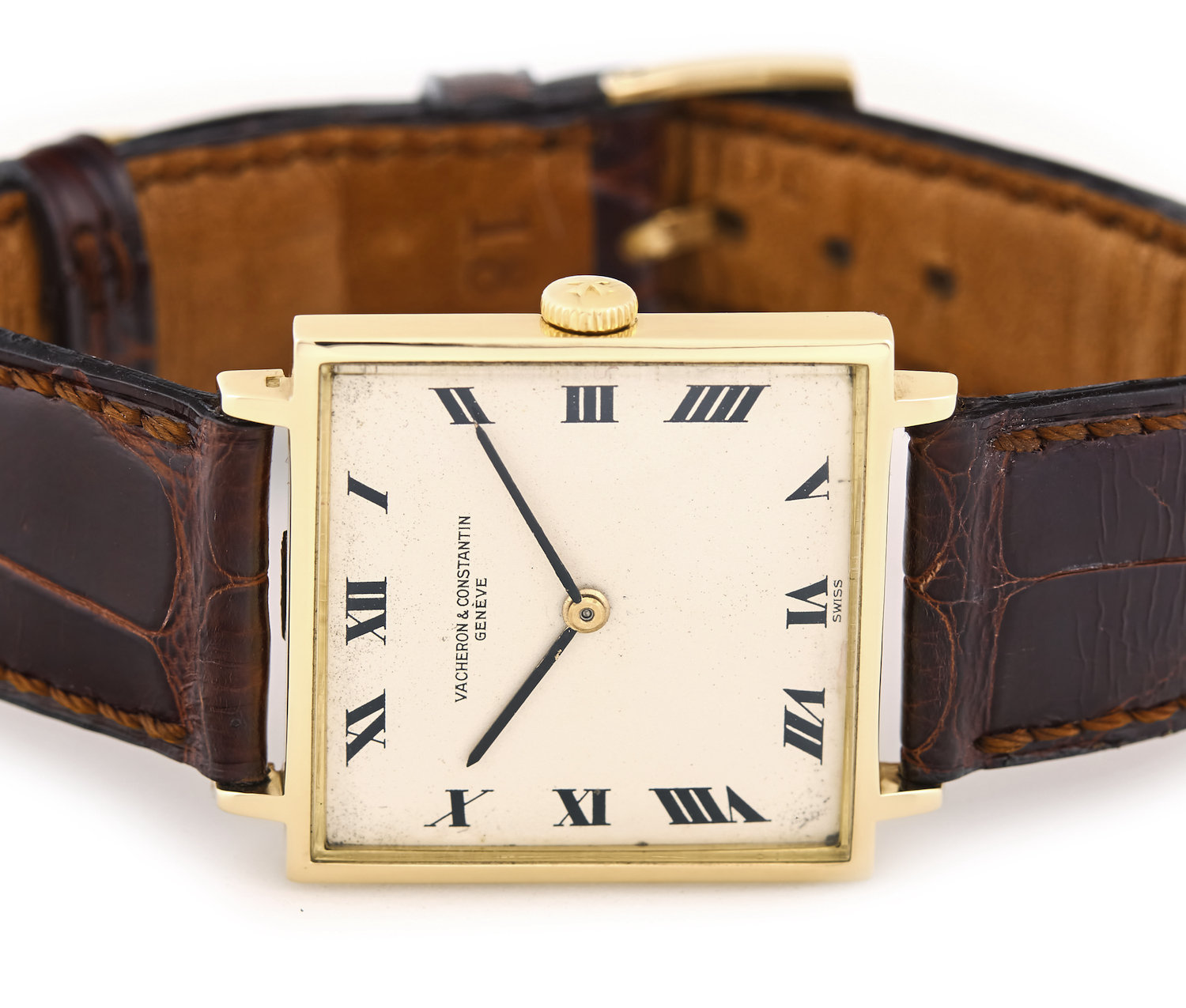
Vacheron & Constantin
The second of the widely recognised ‘Holy Trinity’ of Swiss watchmaking along with Patek Philippe and Audemars Piguet, is Vacheron Constantin. It is the world’s oldest watch manufacturer, and as such, it has remained in continuous operation since 1755. Here are some of the reasons why vintage watch collectors love them:
Technical Excellence:
Vacheron & Constantin is the founding father of a spirit of technical excellence which it has made an art form. This is known as ‘Haute Horlogerie’ at which Vacheron & Constantin has been in the vanguard for over 260 years. This tradition defines the ‘manufacture’, evident in the finest quality execution, reflected in a finish that goes far beyond the demands of the ‘Poinçon de Genève’.
Many will argue that Vacheron & Constantin’s quality is on par if not superior, to the more revered Patek. Making V&C prices which are typically two-thirds that of Patek, a relative bargain. Vacheron & Constantin, while still conservative and elegant in style, are sometimes more flamboyant.
Exclusivity:
For the well-heeled and the collector, vintage Vacheron & Constantin also offer a degree of exclusivity that even Patek Philippe cannot.
During the 1940s and through the 1960s, Vacheron & Constantin only ever produced a maximum of 24 examples of each reference in any one configuration. This means that while it produced a variety of dial and case combinations and colours and designs, each one was strictly limited in number. For the collector, the fact that these watches exist and are often seriously undervalued does not go unnoticed.
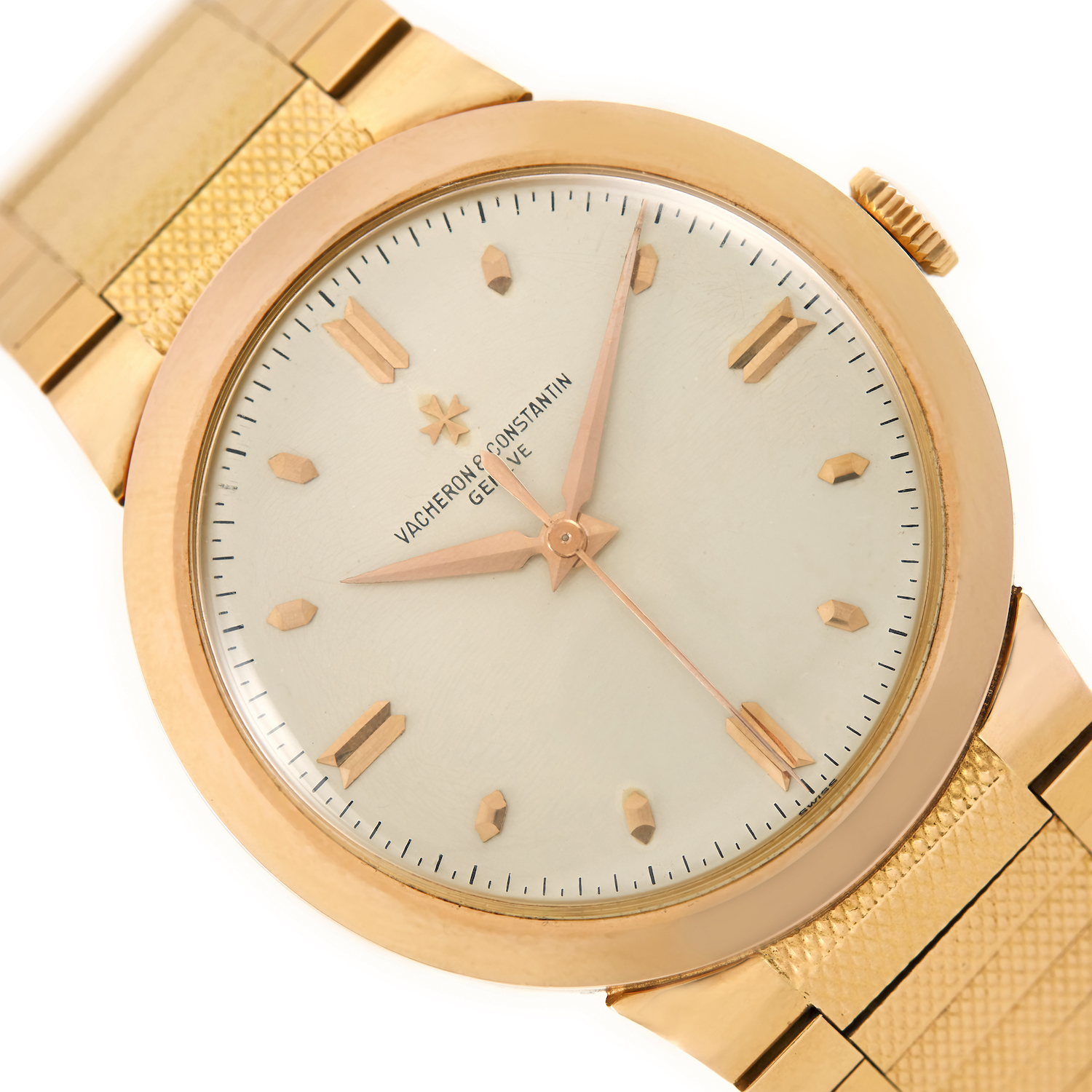
Breathtaking Complications:
Vacheron Constantin has a record-breaking heritage in making complicated watches. As early as 15 years after the company’s founding in 1755, Vacheron was producing complicated timepieces.
In 1918 James Ward Packard of Packard Automobiles commissioned one of the most complicated watches of the era, a watch that sold in 2011 for $1.7 million. More recently, V&C produced the most complicated wristwatch the world had ever seen, the Tour d’Ile, made in only seven examples in 2005 to celebrate the company’s 250th anniversary. With 16 complications, this watch gave Vacheron & Constantin the attention it deserved for its excellence in design, innovation and manufacture.
Then came the Ref. 57260 — the most complicated watch ever made — that was released in 2015 as part of a special commission by a collector. With 57 complications, this timepiece did not fail to disappoint and continues to push the boundaries of modern watchmaking today.
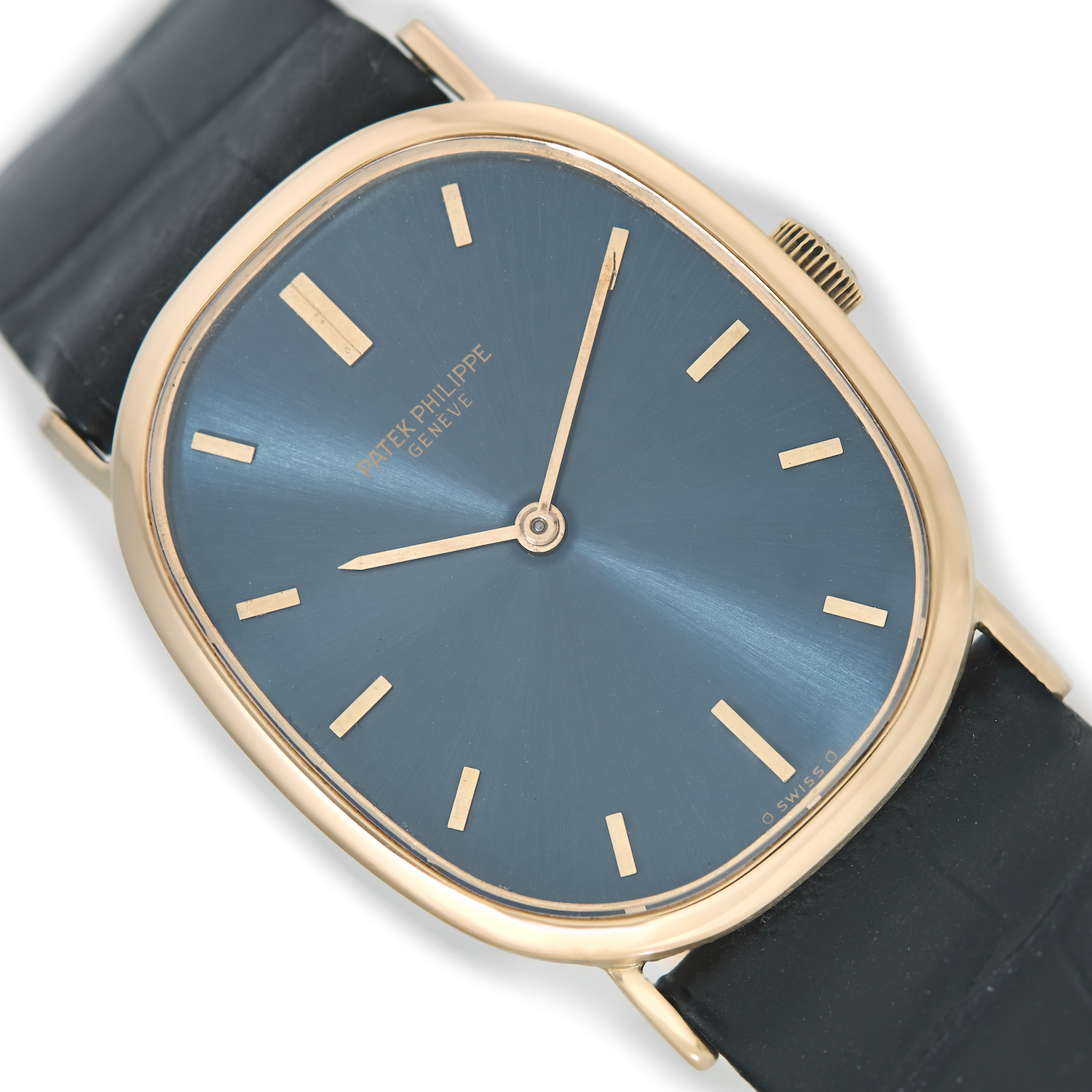
In Summary
By choosing a popular model from a respected brand you are making a much safer bet than you would with most others. There is safety in choosing a well respected and popular brand because they have remained popular due to their reliability.
The other main factor is value and return on investment. The popularity of the watch brands mentioned above is driven by their enduring appeal over many years. Each of these brands continues its fine tradition today, continuing to build equity in the respective brands.
Lastly, vintage watches are often considered a safe place to invest some cash in times of uncertainty. Inflation gradually erodes the value of our currency at the best of times. When the economy crashes, this can devastate the value of paper investments of all kinds. However, watches always survive and can always be used as a source of quick cash.
But remember that brand alone does not make a watch collectable. Now all you have to do is find that genuinely authentic, original and rare piece that deserves a place in your collection. We’d be happy to help.
At Vintage Gold Watches, we’re committed to excellence and helping people find the perfect vintage watch that reflects their style and personality. Call us on 020 7727 7095 to make an appointment or browse our vintage watches and accessories on our website.
 Alan Wood is a trusted vintage watch dealer with over 35 years of private collecting experience. After founding Vintage Gold Watches in 2011, his deep knowledge and infectious passion for mechanical timepieces earned him a highly respected reputation in the industry. Vintage Gold Watches has become a renowned dealer thanks to Alan’s expertise and skilled team of restorers. Alan’s love for vintage watches started as a young Mechanical Entrepreneur and grew into an obsession. He believes the finest watches were made in the 1950s, 60s, and 70s, and he is thrilled to share them with others.
Alan Wood is a trusted vintage watch dealer with over 35 years of private collecting experience. After founding Vintage Gold Watches in 2011, his deep knowledge and infectious passion for mechanical timepieces earned him a highly respected reputation in the industry. Vintage Gold Watches has become a renowned dealer thanks to Alan’s expertise and skilled team of restorers. Alan’s love for vintage watches started as a young Mechanical Entrepreneur and grew into an obsession. He believes the finest watches were made in the 1950s, 60s, and 70s, and he is thrilled to share them with others.

